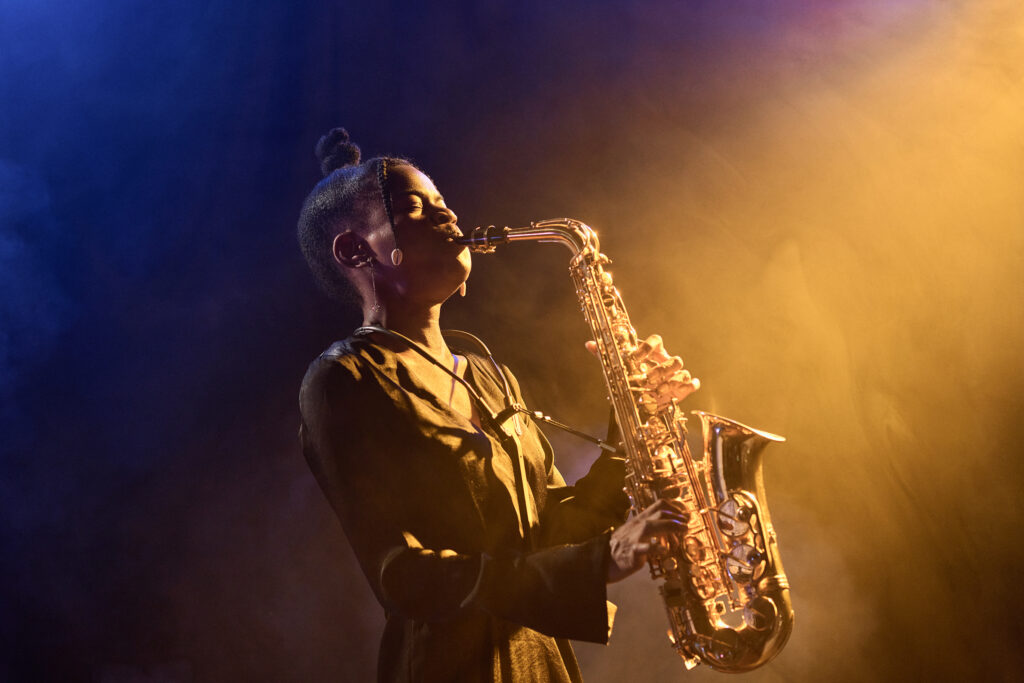The Birth & Evolution of South African Jazz

South Africa, a land of diverse cultures and rich traditions, has given birth to an equally diverse and vibrant jazz music scene. The creation of South African jazz music is a harmonious journey that intertwines culture, politics, and a relentless passion for music.
Today, we’re taking a closer look at the evolution of South African jazz, from its early roots to its global recognition.
The Early Influences: A Mélange of Traditions
South African jazz is deeply intertwined with the country’s historical struggles and diverse population. Jazz found its roots in South Africa in the early 20th century when it became a melting pot of musical traditions. Indigenous rhythms, Western harmonies, and the music of immigrant communities all contributed to the unique South African jazz sound.
One of the earliest forms of South African jazz was Marabi, a genre that emerged in the shebeens of Joburg. It combined elements of ragtime, blues, and African rhythms. During the early 20th century, Marabi was the heartbeat of urban South Africa.
With the growth of urbanization and the forced removals of non-white communities into townships during apartheid, Marabi evolved into Township Jazz. This new style infused African rhythms, American swing, and political messages, making it a potent force against apartheid’s oppression.
Jazz as a Form of Resistance
During the darkest days of apartheid, jazz music became a form of resistance and resilience. Musicians defied the oppressive regime by composing songs that called for freedom and celebrated the resilience of the human spirit. The music acted as a unifying force and a voice for the silenced.
With the end of apartheid in 1994, South African jazz took on a new life. Musicians were no longer restricted by racial segregation, and they could freely collaborate with artists from all backgrounds. The post-apartheid era saw the emergence of a younger generation of jazz musicians who incorporated a wide range of influences into their music, from traditional African sounds to global trends.
Legends and Pioneers
South African jazz produced iconic figures who played pivotal roles in shaping the music. Artists like Hugh Masekela, Miriam Makeba, and Abdullah Ibrahim gained international recognition, not only for their musical talent but also for their efforts to raise awareness about apartheid’s brutality through their songs.
Hugh Masekela, in particular, became a global jazz ambassador, advocating for the end of apartheid while using his trumpet to convey the struggles and hopes of the South African people.
Global Recognition and Fusion
Today, South African jazz is recognized and celebrated worldwide. The international success of artists like Ladysmith Black Mambazo, Jonathan Butler, and Sibongile Khumalo has played a significant role in putting South African jazz on the global stage. Furthermore, jazz festivals like the Cape Town International Jazz Festival attract enthusiasts from around the world, further promoting the music.
In recent years, South African jazz has also embraced fusion, blending traditional sounds with contemporary elements. This experimentation has led to innovative and unique compositions that keep the genre fresh and dynamic.
The story of South African jazz is a tale of resilience, creativity, and unity. It has been a vital part of the country’s history and continues to evolve and adapt to the changing times. As South Africa’s jazz scene continues to flourish, it remains a powerful testament to the enduring spirit of its people and the unifying force of music.





